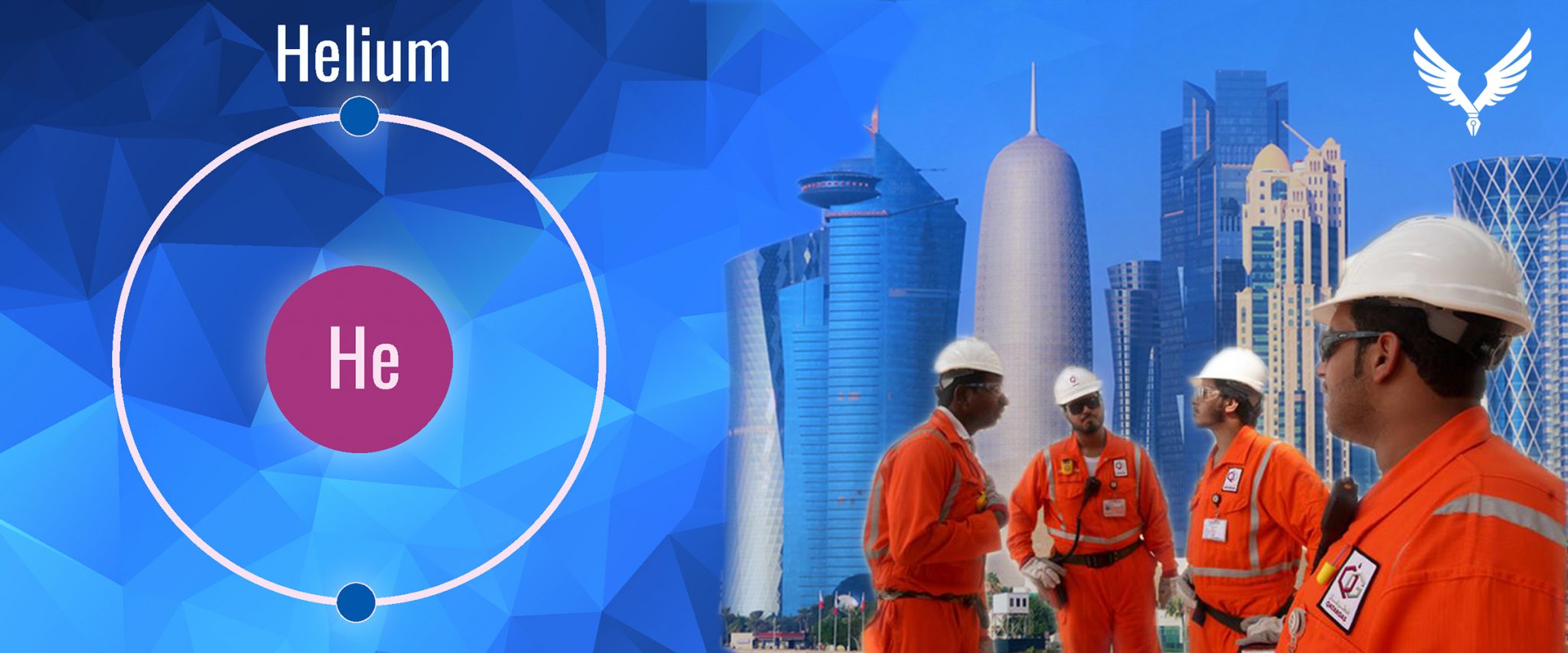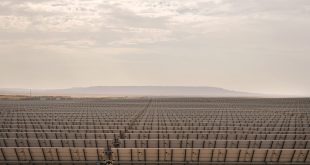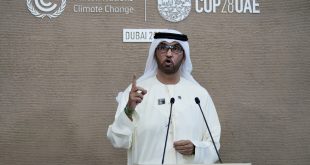Thanks to Qatar’s increased production of helium and massive reserves in the North Dome field, the country is now positioned to quickly increase its share in the helium export market.
Helium is the second most abundant element in the universe. An inert gas, it is mainly used to cool medical diagnostic equipment and maintain low temperatures in laboratories; it also has applications in the electronics, defense, and aerospace industries. According to the British financial institution HIS Market, the United States has the largest reserves of helium in the world, followed by Qatar and Iran. However, Iran has not taken advantage of its supply. In 2015, the United States topped the list of helium-consuming countries globally, with four percent of its helium coming from strategic reserves. The Federal Office for Land Management, which is responsible for managing the strategic reserves, warns that if helium production continues to be disrupted beyond 2021, the reserves will be depleted. Even if the private sector fills the gap in government helium production, the American scientific community is concerned about the future of helium intake and cost. Thanks to Qatar’s increased production of helium and massive reserves in the North Dome field, the country is now positioned to quickly increase its share in the helium export market.
Oil companies harvest helium deep under the Earth’s surface within natural gas chambers. It is a slow and challenging process, during which helium is dispersed into natural gas chambers by uranium rock resulting from radioactive decay. In 2019, the United States was the largest producer of helium, generating 68 million cubic meters. Qatar produced 51 million cubic meters in that same year, while Algeria produced 14 million cubic meters. Australia and Russia, the next largest producers, produced 4 and 2 million cubic meters, respectively.
Qatar’s first helium production facility opened in 2005, and the second, twice the size of the first, opened in December 2013. With the second plant’s launch – the 1.8 billion rial Helium-2 plant in Ras Laffan Industrial City, boasting a production capacity of 1.3 billion cubic feet per day – Qatar has become the largest exporter and the second-largest producer of helium gas in the world. Owned by Qatar Gas and Ross Qatar and managed by Ross Gas Company, this factory is now the largest helium processing facility globally, with a daily production capacity of 17.3 million tons of liquid helium.
The World’s Largest Producer and Exporter of Helium
Qatar’s North Dome gas field accounts for more than 28% of the world’s helium gas reserves; as of 2013, the country is considered to be the largest reserve of this ultralight gas, followed by Iran (which shares the field), Russia, and the United States. As the current most important Iranian gas partner in the South Pars, Qatar also holds the largest producer and exporter of LNG and GTL globally. Qatargas Operating Company Limited reached a significant milestone when it loaded the ten-thousandth cargo of helium from its Helium-2 plant, further cementing Qatar’s significance in the helium market and its proven record for safety, reliability, and quality. By the close of 2021, Qatar could reach nearly 35% of global helium production, with a total production capacity of 2.6 billion cubic feet per year.
With its Helium-1 and Helium-2 plants, Qatargas, which produces and stores Qatar’s helium and provides loading services in its location at Ras Laffan, has the capacity to produce 2.2 billion standard cubic feet (bscf) per year. This year, it opened its Helium-3 plant with a production capacity of 400 million standard cubic feet (mscf). Today, nearly 35% of the world’s helium will be produced by Qatargas, which has an overall production capacity of 2.6 bscf per year. The Helium-1 and Helium-2 plants began operations in September 2005 and June 2013 respectively, with the latter loading its 5000th cargo in May 2017. However, after the 2017 Gulf crisis, the blockade against the country led to a short disruption in its helium production.
Trajectory of the Global Helium Market
Given helium’s applications in high-tech industries, including medicine, chip manufacturing, and space exploration, its global demand is predicted to increase by two to three percent per year. Given the prevalence of MRI scans (which use helium) and their increasing utility for early diagnosis in chronic diseases, cancer screening, and neurological disorders, helium’s use and demand will naturally increase. The industrial sector utilizes helium to ensure that bubbles are not trapped in fiber cables, and the semiconductor industry has recently been growing, particularly in the Asia-Pacific region. Asian markets are increasingly using helium in the manufacturing of flat panels, semiconductors, and optical fibers. Helium is also desirable for electronics manufacturing, which will increase its demand in some Asian countries, particularly China, India, South Korea, and Taiwan.
Various crucial industries’ growing demand for helium will enable Gazprom’s new production premises, at the verge of completion in Siberia, to increase Russia’s share in the global helium market to roughly 30%. Gazprom intends to export helium in the form of cryogenically cooled liquid from the port of Vladivostok, from where China and American factories on the West Coast will receive their supply. Russia aims to meet 25 to 30% of global helium needs by the middle of this decade.
A Three-Way Competition
Given the current production capacities of countries in the global energy market, it seems that the main competition in short- and medium-terms will be between Qatar and the United States. If Russia does not face a problem in financing its helium production project, it should see a sudden increase in its market share. Increasing Russia’s market share will boost market competition between the three top producing countries. These countries are also competitors in the regional and global LNG market; the European natural gas market in particular has become a site of increasing competition between Russia and the U.S.
Presently, Iran does not influence the natural gas and helium markets. Iran needs foreign capital and technology to increase oil and gas production capacity and build helium production facilities – neither of which it has been able to obtain under the current sanctions regime. Until it reaches an agreement with the Biden government to lift sanctions, and secures investment and cooperation from developed countries, it cannot be a serious competitor in the short-term.
Qatar, on the other hand, will likely emerge as a powerful force in the helium market in the coming decade. Its plans for attracting foreign capital and technology to increase its LNG and helium production capacity, as well as its low cost of production, mean that the country’s market share will likely increase, and the country’s domestic stability, successful foreign policy, and economic diplomacy will provide ideal conditions for helium marketing. The end of the Gulf crisis will also positively impact its energy and foreign policy, sustaining and strengthening Qatar’s important role in the energy market.
www.https://gulfif.org/





